
I am Deepansh SAXENA, presently working as a Senior Engineer in the CFD Dept. at Mahindra and Mahindra Ltd. Aerodynamics and Aeroacoustics are a part of my job profile and are my interests too. I have completed two years at Mahindra and Mahindra Ltd. after spending 1.5 years as an R and D Engineer in an HVAC MNC called Systemair India Pvt. Ltd. Apart from engineering, I like to indulge in cooking and reading about psychology as my hobbies.
Computational Aero-Acoustic Analysis Of Radiator Cooling Fan And Its Design Improvement For Noise Reduction
This study investigates radiator fan noise reduction using Computational Aeroacoustics (CAA). Flow bench testing identifies noise, but understanding its generation is crucial for early, cost-effective design changes. CAA simulations with the Lattice Boltzmann Method (LBM) predicted noise and identified sources. Design modifications aimed to decrease noise without sacrificing airflow. CFD results showed a strong correlation with test data, highlighting CAA's potential for noise prediction and improved fan design. This work offers a valuable tool for visualizing complex flow behaviour within the fan, providing insights not achievable through physical testing alone. The successful noise reduction through CAA-guided design demonstrates its role in optimizing future radiator fan development.

I am Nadella KARTHIK, currently working as CFD Lead Engineer at Mahindra & Mahindra Ltd for the past two years with expertise in Aerodynamics & Aeroacoustic simulations. Prior to this, served as a Consultant CFD Engineer at Fiat Chrysler Automobiles (FCA) for 2.8 years expertise in full vehicle Thermal simulations. In addition to professional accomplishments, I am a sports enthusiast who excels in playing cricket & badminton as a hobby.
Computational Aero-Acoustic Analysis Of Radiator Cooling Fan And Its Design Improvement For Noise Reduction
This study investigates radiator fan noise reduction using Computational Aeroacoustics (CAA). Flow bench testing identifies noise, but understanding its generation is crucial for early, cost-effective design changes. CAA simulations with the Lattice Boltzmann Method (LBM) predicted noise and identified sources. Design modifications aimed to decrease noise without sacrificing airflow. CFD results showed a strong correlation with test data, highlighting CAA's potential for noise prediction and improved fan design. This work offers a valuable tool for visualizing complex flow behaviour within the fan, providing insights not achievable through physical testing alone. The successful noise reduction through CAA-guided design demonstrates its role in optimizing future radiator fan development.


Mukunda Madhava NATH is a Sr. Scientist in the Predictive Engineering & Design team of SABIC Technology & Innovation. He has a bachelor’s degree in mechanical engineering from NIT Silchar and a master’s degree in product design & engineering from IISc Bangalore. Before SABIC, he worked at General Motors and Samsung Research, and has demonstrated expertise in structural simulation and product design through multiple published patents (1 granted) and conference papers.
Use of Simulation to Develop and Validate Plastic End Plates for EV Battery Packs
This study explores using simulation to develop and validate plastic end plates for electric vehicle (EV) battery packs. Optimizing production cost and component design is crucial for EV battery technology. Traditionally, metal end plates require complex machining, leading to high costs. This research investigates the feasibility of injection-moulded plastic end plates using Abaqus software. Two designs were evaluated: an all-plastic and a hybrid plastic-metal insert. Both utilized a high-strength, flame-retardant polypropylene copolymer with long glass fibres. Simulations focused on structural stiffness under realistic loading scenarios, including internal cell pressure and bending loads. Abaqus' robust contact modelling and material property capabilities enabled precise simulation of the end plates' behaviour. The successful validation through simulation demonstrates the potential of plastic end plates for cost-effective and efficient EV battery pack design.

If you want to get more information, don’t miss our speaker’s profile on LinkedIn
MBS-FEM Co-Simulation Approach to Assess Strength & Durability of Automotive Chassis Components
This presentation explores a co-simulation approach using Multi-Body Dynamics (MBS) and Finite Element Method (FEM) to assess the strength and durability of automotive chassis components. Chassis components are critical for safety and must withstand harsh environments and demanding use. Traditional methods, using separate MBS and FEM simulations, have limitations. Co-simulation offers a more accurate solution by combining the strengths of both methods. Simpack (MBS) provides a detailed system-level response, while Abaqus (FEM) delivers high-fidelity non-linear solutions using plasticity and damage material models. This co-simulation approach is demonstrated through case studies of chassis components under extreme loading scenarios.


If you want to get more information, don’t miss our speaker’s profile on LinkedIn
MBS-FEM Co-Simulation Approach to Assess Strength & Durability of Automotive Chassis Components
This presentation explores a co-simulation approach using Multi-Body Dynamics (MBS) and Finite Element Method (FEM) to assess the strength and durability of automotive chassis components. Chassis components are critical for safety and must withstand harsh environments and demanding use. Traditional methods, using separate MBS and FEM simulations, have limitations. Co-simulation offers a more accurate solution by combining the strengths of both methods. Simpack (MBS) provides a detailed system-level response, while Abaqus (FEM) delivers high-fidelity non-linear solutions using plasticity and damage material models. This co-simulation approach is demonstrated through case studies of chassis components under extreme loading scenarios.

If you want to get more information, don’t miss our speaker’s profile on LinkedIn
MBS-FEM Co-Simulation Approach to Assess Strength & Durability of Automotive Chassis Components
This presentation explores a co-simulation approach using Multi-Body Dynamics (MBS) and Finite Element Method (FEM) to assess the strength and durability of automotive chassis components. Chassis components are critical for safety and must withstand harsh environments and demanding use. Traditional methods, using separate MBS and FEM simulations, have limitations. Co-simulation offers a more accurate solution by combining the strengths of both methods. Simpack (MBS) provides a detailed system-level response, while Abaqus (FEM) delivers high-fidelity non-linear solutions using plasticity and damage material models. This co-simulation approach is demonstrated through case studies of chassis components under extreme loading scenarios.

AJAY KUMAR AJ, M.Tech in Applied Mechanics from IIT Madras, Lead analysis Engineer Battery Structures with 13 years of experience.
Computational simulation for quantifying Thermal Interface Materials in Battery assembly application
Thermal Interface Materials (TIMs), like thermal paste, are crucial for heat transfer in EV batteries. Traditionally, optimizing TIM volume, shape, and placement requires time-consuming lab tests. This presentation explores a CAE simulation method using Abaqus software to overcome these limitations. It accurately predicts TIM performance under assembly loads, identifying potential spill-over and aiding in achieving desired tolerance stack values. Additionally, it evaluates assembly forces, minimum TIM thickness, stress distribution, and component deformation, providing valuable insights for designing reliable battery assemblies with optimized TIM usage. This approach enhances structural integrity and facilitates efficient battery design.

If you want to get more information, don’t miss our speaker’s profile on LinkedIn
Computational simulation for quantifying Thermal Interface Materials in Battery assembly application
Thermal Interface Materials (TIMs), like thermal paste, are crucial for heat transfer in EV batteries. Traditionally, optimizing TIM volume, shape, and placement requires time-consuming lab tests. This presentation explores a CAE simulation method using Abaqus software to overcome these limitations. It accurately predicts TIM performance under assembly loads, identifying potential spill-over and aiding in achieving desired tolerance stack values. Additionally, it evaluates assembly forces, minimum TIM thickness, stress distribution, and component deformation, providing valuable insights for designing reliable battery assemblies with optimized TIM usage. This approach enhances structural integrity and facilitates efficient battery design.
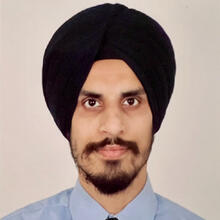

Arshdeep Nagpal is a CAE Analyst at Tata Consultancy Services, supporting Casting Component Durabilty Fatigue team at General Motors. He holds a Bachelor of Technology degree in Automobile Engineering from SRM University, Chennai. With extensive experience in Durability and Fatigue analysis of ICE Engines, Arshdeep’s current focus is on the manufacturing simulations FEA related to cell manufacturing.
Battery Electrode Calendering Simulation with Abaqus Explicit
The purpose of this paper is to present the Battery Electrode Calendering process. Electrode calendering is a common compaction-by-rolling process used in industry. The purpose of calendering is to reduce the porosity of the electrode which improves the particle contact and thus enhances the energy density of the battery. However, this process can bring some issues, for example, it may lead to particle pulverization and impaired electrochemical performance and can cause failure of the collector/foil layer because of severe wrinkling which will affect downstream operations. To study the effect of operation parameters on calendared electrodes, the calendering process is simulated with Abaqus/Explicit. CAE methods are employed to study the calendering behaviours at different scale levels.


Ramachandra K N, who has 22 years of industry experience, started his career with Avasarala Automation Limited in 1999 as a Project Engineer. Later he joined Cummins India Ltd and worked for four years in Research and Development, Applied Mechanics as Executive Manager. He joined Tata Consultancy Services Ltd in the year 2008, working for a Global Automotive OEM as a Delivery Manager in his current role and works with them for various technical requirements which can be addressed using SIMULIA products. He has a Master's Degree in Machine Design from BMS College of Engineering, Bangalore. His focus areas are CAE Structural Durability Analysis, Optimization and Automation.
Battery Electrode Calendering Simulation with Abaqus Explicit
The purpose of this paper is to present the Battery Electrode Calendering process. Electrode calendering is a common compaction-by-rolling process used in industry. The purpose of calendering is to reduce the porosity of the electrode which improves the particle contact and thus enhances the energy density of the battery. However, this process can bring some issues, for example, it may lead to particle pulverization and impaired electrochemical performance and can cause failure of the collector/foil layer because of severe wrinkling which will affect downstream operations. To study the effect of operation parameters on calendared electrodes, the calendering process is simulated with Abaqus/Explicit. CAE methods are employed to study the calendering behaviours at different scale levels.


I have completed my BE (Mechanical) from VTU and have 12 years of experience in CAE. Currently working in TATA motors for full vehicle durability
Pseudo-Velocity Shock Analysis of BEV Battery Mounting Bracket
EV safety is paramount, requiring robust battery packaging that meets regulations like AIS 038. Shock load analysis is crucial for battery pack durability. Shaker bench testing with shock pulses can be expensive for large BEV battery packs. This presentation explores using pseudo-velocity shock analysis with Abaqus software for BEV battery mounting brackets. The pseudo-velocity method employs pre and post-acceleration pulses to achieve realistic simulations during impact scenarios. This avoids unrealistic high-velocity and displacement values associated with applying a direct shock pulse. Abaqus, suited for non-linear transient analysis, is used due to the potential for high plastic strains during impact. This approach offers a cost-effective and efficient way to analyze BEV battery bracket behaviour under shock loads during the development phase.


Manoj has more then 16 years of experience in industrial R&D both in government organization and private sector. His research interests are mathematical modeling, FEM, plasticity. He did his under-graduation in Mechanical Engineering from NIT-Durgapur and post-graduation from IIT-Kanpur with specialization in Solid-Mechanics & Design. He has vast exposure to rolling mill processes and carried out several improvement projects involving modeling and simulation. Presently, he is working as a Principal researcher in Product Application Research Group of Tata Steel-R&D division (India) and primarily focus on development of novel solution in the areas of sheet metal forming and provide advanced technical support to automotive and construction customers
Bow Defect in Cold Roll Forming - A Computational Approach & Analysis
Cold roll forming (CRF) shapes sheet metal into high-strength sections, but can introduce bow (curvature). This study uses ABAQUS® FE simulation to investigate bow in U-sections. Simulations modelled elastic-plastic sheet metal and rigid rolls. The non-linear dynamic analysis identified the bow's root cause as longitudinal strain distribution. Thirteen simulations isolated key factors: bow increases with sheet thickness and decreases with material strength. These findings align with prior research [1, 2], and this model can aid in exploring CRF defects and corrective measures.


Venkat Raju DASU has more than 20 years of experience in industrial R&D and engineering consulting. His research interests are deformation modelling, Finite element analysis, composite modelling, life prediction. He did under-graduation in Mechanical Engineering from Kakatiya Institute of Technology and Science, Warangal and post-graduation from IIT Delhi with specialisation in Production Engineering. His overall experience includes steel processing through hot rolling, cold rolling, wire drawing, sheet metal deformation, life prediction of various components in industrial gas turbines, thermal modelling of steel processing, modelling of composites for various applications. Presently, he is working as Principal Scientist in Production application research group of R&D division in Tata Steel (India) and focusses on advanced technical support to both steel plant and external customers in various domains automotive, construction segments while leading product design in new material applications
Bow Defect in Cold Roll Forming - A Computational Approach & Analysis
Cold roll forming (CRF) shapes sheet metal into high-strength sections, but can introduce bow (curvature). This study uses ABAQUS® FE simulation to investigate bow in U-sections. Simulations modelled elastic-plastic sheet metal and rigid rolls. The non-linear dynamic analysis identified the bow's root cause as longitudinal strain distribution. Thirteen simulations isolated key factors: bow increases with sheet thickness and decreases with material strength. These findings align with prior research [1, 2], and this model can aid in exploring CRF defects and corrective measures.


I am a Lead Engineer and Technical specialist in the field of Advanced Structural Simulation having 11 years of experience working in Airbus on static and dynamic analysis of aircraft structures. I am currently more involved in impact and crash simulations of Aircraft Structures for demonstration of Structural Integrity for design and certification.
Use of Abaqus/Explicit simulations for method development of damage of Aircraft composite and sandwich structures for Bird Strike and Tyre Debris Impact
As the use of composites is increasing in the design of A/C structures, Airbus has been playing a key role in developing and validating modelling and simulation methods of composite and sandwich structures. This presentation will focus on the simulation method development of predicting damage in composite and sandwich structures for soft impacts (bird strike, tyre debris impact) using the building block approach and validation at different levels through development tests. During the development phases, "realistic simulations" make it easier to ensure quality, and safety and also reduce costly and time-consuming higher-level tests. The aim at a higher level is to demonstrate the means of compliance for A/C certification through credible simulation methods. The presentation will also highlight Airbus' vision and future challenges for crash and impact simulations of composite structures.
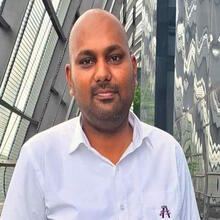

Sudhakar KARUNAMURTHY has nine years of experience in Non-linear Structural, Vibration, and Thermal analysis using ABAQUS. By 2024, he was recognized as a Simulation Champion.
Simulation methodology for evaluating tyre pinch-cut failure
In the automotive industry, tyre manufacturers are evaluating the impact of different cleat configurations on tyres at various speeds and inflation pressures. During these evaluations, tyre failures often occur in the sidewall region due to pinch-cut impacts. To better understand this behaviour, a dynamic analysis of pinch-cut simulations with 90° and 45° cleat configurations was conducted using advanced finite element analysis (FEA) in the Abaqus software. The methodology comprises of realistic material properties, boundary conditions, and dynamic loading to focus on stress distribution, deformation, and potential failure points within the tyre structure. Although the analysis explored the relationship between deformation and failure modes, establishing a quantitative correlation was not feasible due to insufficient dynamic data from automotive manufacturers. To address this, a static cleat test method was developed, with the cleat designed to achieve the sidewall impact. Abaqus simulation results showed a good correlation in stiffness and pinch-cut index with the experimental static cleat test, aligning with dynamic impact test deformation and proving to be a reliable alternative for evaluating tyre impacts.
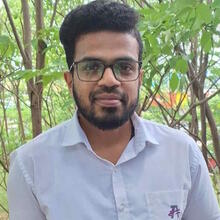

Antony ABRAHAM B, an engineer at Apollo Tyres, brings five years of simulation expertise to the tyre industry. His contributions have significantly enhanced tyre structural integrity and handling performance. Now, Antony is working on advanced simulation methodologies to proactively tackle field failures. Outside of work, he is a passionate MotoGP enthusiast and a budding guitarist.
Simulation methodology for evaluating tyre pinch-cut failure
In the automotive industry, tyre manufacturers are evaluating the impact of different cleat configurations on tyres at various speeds and inflation pressures. During these evaluations, tyre failures often occur in the sidewall region due to pinch-cut impacts. To better understand this behaviour, a dynamic analysis of pinch-cut simulations with 90° and 45° cleat configurations was conducted using advanced finite element analysis (FEA) in the Abaqus software. The methodology comprises of realistic material properties, boundary conditions, and dynamic loading to focus on stress distribution, deformation, and potential failure points within the tyre structure. Although the analysis explored the relationship between deformation and failure modes, establishing a quantitative correlation was not feasible due to insufficient dynamic data from automotive manufacturers. To address this, a static cleat test method was developed, with the cleat designed to achieve the sidewall impact. Abaqus simulation results showed a good correlation in stiffness and pinch-cut index with the experimental static cleat test, aligning with dynamic impact test deformation and proving to be a reliable alternative for evaluating tyre impacts.
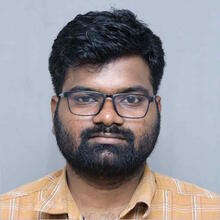

FEA Engineer with 2 Years of experience in Coupled Thermal-electric Structural analysis, Joule heating analysis of Electro-Mechanical Components like High-voltage Fusebox, Interconnects and Power Distribution Units used in BEV and PHEV.
Coupled Thermal Electrical Analysis of AC Vehicle Charging Inlet and Charge plug used in Battery Electric Vehicle
This paper will present a coupled thermal-electric finite element analysis (FEA) to verify the AC Vehicle Charging Inlet and Charge plug components are capable of handling the heat generated by the defined current loads. This is done to ensure the protection of electrical and electronic components with reliable circuit protection solutions for battery electric vehicles (BEV). The finite element models will be utilized to determine the temperature rise for each component inside the Charging Inlet and Charge plug based on an applied current. Then the baseline models will be used to optimize the internal components to compare well within the Critical temperatures. The FEA models will be modelled utilizing the Abaqus/Standard finite element software.


Education: Bachelor in Mechanical Engineering and Masters in Energy Engineering.
Career experience: An accomplished simulation engineer having experience of over 5 years in the automotive domain. Proficient in Thermal domain of various automotive subsystems using ABAQUS, ICEPAK.
Coupled Thermal Electrical Analysis of AC Vehicle Charging Inlet and Charge plug used in Battery Electric Vehicle
This paper will present a coupled thermal-electric finite element analysis (FEA) to verify the AC Vehicle Charging Inlet and Charge plug components are capable of handling the heat generated by the defined current loads. This is done to ensure the protection of electrical and electronic components with reliable circuit protection solutions for battery electric vehicles (BEV). The finite element models will be utilized to determine the temperature rise for each component inside the Charging Inlet and Charge plug based on an applied current. Then the baseline models will be used to optimize the internal components to compare well within the Critical temperatures. The FEA models will be modelled utilizing the Abaqus/Standard finite element software.


I'm working as a lead simulation engineer at Aptiv R&D. responsible for all non-linear and dynamics simulations for automotive components EV 's.
Harmonic vibration analysis for an Automotive wireless charger using ABAQUS
This paper presents a harmonic vibration analysis for an automotive wireless charger. The wireless charger technology eliminates the need for physical cables and connectors, making the charging process more convenient, efficient, and user-friendly. Connecting to a dashboard-mounted wireless charger is faster and easier than plugging in cables. Finite Element Analysis is performed to verify the harmonic response of the wireless charger assembly at the operating harmonic vibration sweep range concerning engine response. Abaqus FEA model is used to determine the natural frequencies, mode shapes, transmissibility, and harmonic response of the assembly. Using the baseline model, the critical stresses are recorded at the critical regions based on the first natural frequency modal response (resonance frequency). The obtained results are used to optimize the design and material changes to improve the first natural frequency with respect to the operating frequency. Design recommendations are provided to improve the stiffness by comparing the limits of maximum stresses and displacement during the resonance frequency. The S-N curve of the component material is used to calculate the fatigue life damage for accumulated cycles.
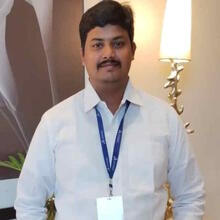

Bachelors in Mechanical Engineering and master in tool Engineering; An accomplished senior simulation engineer having experience of over 6 years in automotive domain. Proficient in static nonlinear analysis and Vibration analysis (Random, Harmonic & Shock) of various automotive subsystems using ABAQUS.
Harmonic vibration analysis for an Automotive wireless charger using ABAQUS
This paper presents a harmonic vibration analysis for an automotive wireless charger. The wireless charger technology eliminates the need for physical cables and connectors, making the charging process more convenient, efficient, and user-friendly. Connecting to a dashboard-mounted wireless charger is faster and easier than plugging in cables. Finite Element Analysis is performed to verify the harmonic response of the wireless charger assembly at the operating harmonic vibration sweep range concerning engine response. Abaqus FEA model is used to determine the natural frequencies, mode shapes, transmissibility, and harmonic response of the assembly. Using the baseline model, the critical stresses are recorded at the critical regions based on the first natural frequency modal response (resonance frequency). The obtained results are used to optimize the design and material changes to improve the first natural frequency concerning operating frequency. Design recommendations are provided to improve the stiffness by comparing the limits of maximum stresses and displacement during the resonance frequency. The S-N curve of the component material is used to calculate the fatigue life damage for accumulated cycles.


Dr. Ganesh JADHAV is the Head of Simulation Engineering and Ultrasim® in India. He holds a PhD in Weld-line and Integrative Simulation, a Master's degree in Mechanical Design Engineering, and a Bachelor's degree in Mechanical Engineering. With over 12 years of experience, Dr. Jadhav has published seven research papers in the Journal of Thermoplastic Composite Materials and Polymer Engineering and Science. He is currently working at BASF India Limited, where he has been since 2017. Previously, he worked at Atlas Copco India Limited from 2012 to 2017.
Weld-line strength prediction for glass fibre reinforced polyamide-6 material through integrative simulation and its experimental validation
Injection moulding is a primary method for producing plastic components, with Moldflow simulations predicting issues like air voids, weld lines, and warpage. This study focuses on weld-line defects, which occur when flow fronts meet during cavity filling. Traditional algorithms assume isotropic materials, but plastics are anisotropic and heterogeneous, affecting accuracy. Integrative simulations, considering material anisotropy, provide more realistic results.
This work uses integrative simulation to predict weld-line strength, as no standard procedure exists. Moldflow simulations were performed on a plaque using 30% glass-filled polyamide-6. A new material model, mapping tensile specimens onto the simulated plaque, was created. This model considers fibre orientation and weld-line characteristics and is solved using Dassault Systems Abaqus.


Shailendra SINGH obtained his M.Tech degree in Microwave Electronics from the University of Delhi South Campus, New Delhi, India, in 2013, and his B.Tech degree from Galgotia’s College of Engineering and Technology, Gr. Noida, India. Currently, he serves as a Senior Engineer at Bharat Electronics Limited in Bangalore, while simultaneously pursuing his Ph.D. in Compact Microwave Passive Components at IIT Tirupati. His research interests include Antenna Design, development, and Testing, digital board testing, as well as real-time system integration and testing. He has also contributed to projects at the Institute for Plasma Research and CEERI-Pilani, India. Moreover, he has authored over 25 research papers in international and national journals as well as conference proceedings.
Design and optimization methodology of broadband circularly polarized crossed dipole antenna by using CST MWS for Navigation systems
This project involves the design of a compact cavity-backed circularly polarized crossed dipole antenna, operational within the frequency band of 1 to 2.5 GHz. This range covers various navigational bands such as GPS (L1, L2, L5), GLONASS, IRNSS L1, and S-Band. An optimization technique leveraging data from CST is developed to enhance the impedance bandwidth and axial ratio of the antenna. Additionally, a technique for improving beam width is also presented in this work.


Tech Lead - Simulation, Diversified experience in Structural FEA, Heat Transfer, NVH and Multibody Dynamics across Product domains including Gasoline Rail systems, Electrical Machines, Automotive Steering Systems.
Evaluation of Localized Plasticity by Using Plasticity Correction Method in Abaqus
Product area: Automotive steering Problem: FE calculations with Plastic material consume considerable computational time than with Elastic Objective: To reduce computational time for solving model without much loss of accuracy Challenge faced : Convergence issues for calculations with Non-linear material properties Solution: With the application of Plasticity correction options introduce in Abaqus 2022 the localized plasticity can be determined without actually running the elastic-plastic calculations In initial step, studies were carried out with a simple Notch plate FE model to evaluate results using Neuber and Glinka Plasticity correction As the next step, Steering rack housing model with multiaxial loading conditions was evaluated. Results were compared with the actual Elastic-plastic calculation results to get insights in terms of accuracy and runtime. An additional calculation with the same model but using a Static Linear Perturbation step in place of a Static, General step was carried out. This evaluation resulted in additional time savings without many deviations in results.


More information coming soon.
Evaluation of Localized Plasticity by Using Plasticity Correction Method In Abaqus
Product area: Automotive steering Problem: FE calculations with Plastic material consume considerable computational time than with Elastic Objective: To reduce computational time for solving model without much loss of accuracy Challenge faced : Convergence issues for calculations with Non-linear material properties Solution: With the application of Plasticity correction options introduce in Abaqus 2022 the localized plasticity can be determined without actually running the elastic-plastic calculations In initial step, studies were carried out with a simple Notch plate FE model to evaluate results using Neuber and Glinka Plasticity correction As the next step, Steering rack housing model with multiaxial loading conditions was evaluated. Results were compared with the actual Elastic-plastic calculation results to get insights in terms of accuracy and runtime. An additional calculation with the same model but using a Static Linear Perturbation step in place of the Static, General step was carried out. This evaluation resulted in additional time savings without many deviations in results.
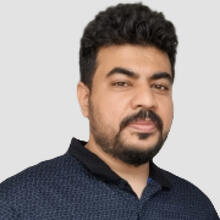
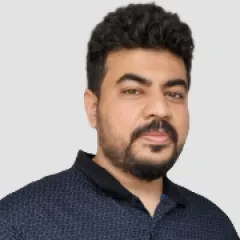
Alok DAS, a seasoned professional with 18 years of diverse experience, co-founded QARGOS, the world's first 2-Wheeler Cargo Platform, announced at 3DXW24 in Dallas, Texas. QARGOS, funded by the Government of Karnataka, has won awards like Elevate 2020-21 and Startup India & Innovation Summit 2023. Alok holds degrees in Mechanical Engineering and a Masters in Mechanical from BITS Pilani, with a specialization in Intellectual Property Rights Law from the National Law School Bangalore. Prior to QARGOS, he spent 12 years at Eaton Corporation, contributing significantly across various domains. Currently, he focuses on developing a Full-Scale Electric Vehicle Platform. Alok's expertise includes driving over 25 innovations, resulting in 100+ patents globally, spanning problem-solving, market research, business planning, personnel management, technology roadmap development, program management, product design, innovation management, supply chain management, vendor negotiation, Six Sigma, product testing, and quality management system deployment.


Satish JHARIYA received the B.E. degree in electronics and telecommunication engineering from the SGSITS, Indore, India, in 2013, and the M.Tech. degree in microwave engineering from IIT-BHU Varanasi, India, in 2015. From 2013 to 2015, he was a Teaching Assistant with the Microwave Measurement Society, IIT-BHU, where he was involved in the study of dielectrics and antenna performance analysis techniques. Since 2015, he has been an RF Design Engineer cum Researcher with the Product Development and Innovation Center (PDIC), Bharat Electronics Limited, Bengaluru, India. His current research interests include the area of RF Sub System design and development for ground and airborne radars, passive and active circuit design, phase-locked loop (PLL)-based synthesizers, high-sensitivity RF receivers, and critical microwave components.
Modelling and Simulation of complex and large models in CST
The presented model is a power divider network. The purpose of the current project was to design a 1:9 wide band power divider network in the given restricted size and space with the specific input and output points. The amplitude and phase matchings are of paramount importance in this design. A modelling and simulation setup technique for the large and complex irregular shape and boundary is developed. This technique provides the reduced computational time and effort for subsequent similar modelling of the structures. A procedure to obtain phase matching amongst the 9 ports within the tolerance of ±5° using the minimum simulation runs is developed.
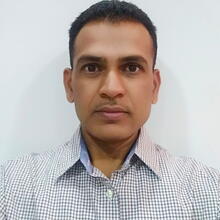
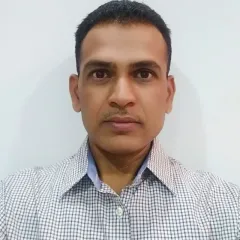
Sanjay is Post Graduate Engineer with Professional Qualifications in Mechanical Engineering. He is the Deputy General Manager - Digital Solutions –CAE at TATA Motors Ltd. He has wide & varied experience in the design & development of automotive vehicles ICE and EV. He has been associated with the automotive engineering segment for around 24 years. He has experience in structural durability assessment of automotive structures on live projects. He is responsible for successfully delivering design and virtual validation of passenger vehicles, commercial vehicles and powertrain systems. He has published several research papers at various user conferences & internationally acclaimed journals, including SAE International.


More information coming soon.


More information coming soon.


Lavanya SELLAPILLAI is a Senior simulation Engineer in Base engine and driveline department of Volvo group trucks technology, Bangalore. She specialized in performing thermo mechanical fatigue and static calculations, on the base engine components. She has over 14 years of experience in FEA and primarily working in Abaqus tool.


Senthilkumar KANNAIYAN has 20+ years of experience in Finite Element Analysis (FEA) in the domain of Automotive Powertrain and Consumer durables. He graduated in master of Engineering with specialization “Engineering Design” from College of Engineering, Guindy, Anna University, Chennai. He is currently a senior team manager in the Mechanical simulation team at Valeo India Private Limited, Chennai. He is also a Valeo recognized FEA simulation expert, mainly focussing on improving simulation confidence level , simulation lead-time reduction and team development.
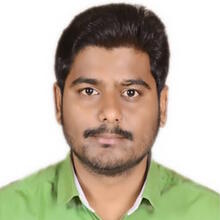
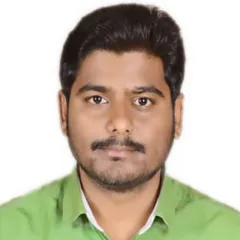
Dineshkumar has overall 14 years of experience in FEA and Currently, he is a Team Lead and working for automotive industry. In his current role, he interacts with globally to the project teams and works with them for various simulation activities and product development which can be addressed using SIMULIA products. He has Bachelors Degree in Mechanical Engineering from Anna University, Chennai. His focus areas are Durability, Vibration, and Thermo-mechanical on Heat exchangers and Battery thermal management components.
Quick design validation of FCM (Front cooling module) under vibration condition using Abaqus
A front cooling module (FCM) is a set of various parts that allow liquid coolant to flow through the engine block and cylinder head passages to absorb the heat of combustion. Engine cooling module (FCM) mainly consists of HTR (High Temperature Radiator), LTR (Low temperature radiator), Fan system, Condenser, ACAC (Air Charged Air Cooler). It is crucial to ensure each assembly works properly without failure to prevent structural failures. During the sweep vibration simulation, high stresses were observed in the HTR and LTR tanks at the middle mounting region. Since the ECM weight is higher, the mounting design is not sufficient to support the weight which results in multiple failure locations. The objective is to optimize the design of the middle mount of the HTR and LTR tanks for the sweep vibration simulation to avoid the coolant leakage.


Mr. Naga Srinivasa Rao working as Lead Research Engineer at Hyundai MOBIS, Hyderabad. He is expertise in RF antenna design and EMI-EMC analysis, with remarkable academic and professional journey. For the past decade, Srinivasa Rao has been instrumental in the design, simulation, and optimization of RF antennas catering to diverse applications, including Automotive and Defence. In addition to his proficiency in RF antenna design, Srinivasa Rao possesses a strong command of EMI-EMC analysis techniques. He has a solid grasp of electromagnetic theory and its application to assess and mitigate electromagnetic interference issues in electronic systems. His proficiency with simulation software such as CST Microwave Studio ensures that his designs not only meet performance standards but also comply with regulatory norms, minimizing interference effects.
Efficient Optimization: Advancing Automotive Communication with High-Speed PCB GMSL2 Interface Simulation
In the fast-paced realm of automotive technology, the adoption of advanced driver-assistance systems (ADAS) and autonomous vehicles demands sturdy communication links. Gigabit Multimedia Serial Link 2 (GMSL2) technology emerges as a fundamental component, facilitating the transmission of high-speed video and sensor data over extended distances within vehicle environments. This comprehensive study encompasses the meticulous electromagnetic analysis of high-speed PCB GMSL2 interfaces, achieved through the utilization of the CST MWS simulation tool.


Pawan Rakesh THAKOR is a Scientist/Engineer at the Vikram Sarabhai Space Center (VSSC), ISRO. He holds a B-Tech in Aerospace Engineering from the Indian Institute of Space Science and Technology (IIST), Trivandrum. Pawan has nearly three years of experience in the design and analysis of composite structures for aerospace applications. He is responsible for designing and developing innovative aerospace composite structures, utilizing engineering principles to ensure optimal performance, durability, and safety in critical launch vehicle components. His research interests include finite element analysis and structural analysis of various composite components in launch vehicles. Pawan has been a key contributor to several successful missions at ISRO.
Determination of Failure Load of Insert on Sandwich Structure through FE Analysis and Experimental Validation
Determination of Failure Load of Insert on Sandwich Structure through FE Analysis and Experimental Validation Thakor Pawan Rakesh, Sonali Gyan, Dr. Senthil K., Dr. Santhosh B. Vikram Sarabhai Space Center (VSSC), ISRO. The use of composite structures in the aerospace industry has become increasingly prevalent due to their high strength-to-weight ratio, which is particularly important for satellite applications. Honeycomb sandwich structures are widely used in satellite applications due to their high specific strength and stiffness. One such application is the construction of a CFRP (Carbon Fiber Reinforced Polymer) deck platform for satellites.


My name is Anshumaan SHARMA and I have been working in the U R Rao Satellite Centre of the Indian Space Research Organization for the last 9 years. My name is Anshumaan SHARMA and I have been working in the U R Rao Satellite Centre of the Indian Space Research Organization for the last 9 years. My work pertains to executing simulation methodologies to verify the design of mechanisms onboard a spacecraft.
Non-Linear Analysis of a Hold-Down and Release Mechanism for a Spacecraft Appendage
A hold-down and release mechanism (HDRM) is used to keep a spacecraft appendage in the stowed or intended state against the loads experienced during launch. The primary aim of providing an HDRM is to keep the natural frequencies of the appendage away from that of the spacecraft to avoid resonance. The function of the HDRM is to act as a restraint during the launch and once, the spacecraft is placed or inserted in its designated orbit, this restraint mechanism provides a positive and nominal release at a separating interface between the spacecraft and appendage. The analysis and design of one such HDRM developed for a spacecraft appendage are discussed in this paper. The novelty of the work presented here is that the design of the HDRM is analyzed in terms of simulating a contact non-linearity at the separating interface. The objective of this paper is to present an in-depth analysis of the hold-down components as performed in ABAQUS. The capabilities of the ABAQUS, as a simulation and analysis tool are explored in the non-linear domain.


Saran CHANDRAN KT has close to 7 years of experience in CAE domain with expertise in Structural analysis. He has a bachelor’s degree from GCT Salem in Mechanical Engineering. He started his career with Xitadel CAE Technologies as Abaqus Support and later moved to Inteva Products.
An approach towards predicting structure-borne impact noise with Abaqus
Acoustics in the automobile industry is a critical aspect of vehicle design and engineering, focusing on the sound quality and noise control within the vehicle. It is important for a manufacturer to thoroughly examine the acoustic performance to reduce unwanted noise, enhance desirable sounds, and ensure overall acoustic comfort for passengers. Multiple sources in a vehicular structure could induce noise and vibrations affecting the acoustic performance; however a holistic experimental testing with all the sources taken into consideration might be physically infeasible. We could bridge this gap by simulating a 3-dimensional acoustic FEA model using Abaqus for structure-borne noises, validate the results with the experimental data and further extend its applications to addressing the aforementioned complex scenarios to rightly predict the performances. In this paper, we try to capture the noise due to the impact of two Aluminium metal blocks in an acoustic chamber. A finite element model with similar loads, boundary conditions and interactions is generated using Abaqus/Explicit. Impact loads are taken to the acoustic domain for noise (dB) calculations.


Achala KAUSHIK has about 4 years of experience in Inteva Products. She has a master’s degree in Product Design and Manufacturing from RV College of Engineering, Bangalore. In her current role as a Senior Analysis Engineer, she mainly works on Structural and Kinematic simulations for Closures and Motors Product lines.
An approach towards predicting structure-borne impact noise with Abaqus
Acoustics in the automobile industry is a critical aspect of vehicle design and engineering, focusing on the sound quality and noise control within the vehicle. It is important for a manufacturer to thoroughly examine the acoustic performance to reduce unwanted noise, enhance desirable sounds, and ensure overall acoustic comfort for passengers. Multiple sources in a vehicular structure could induce noise and vibrations affecting the acoustic performance; however, a holistic experimental testing with all the sources considered might be physically infeasible. We could bridge this gap by simulating a 3-dimensional acoustic FEA model using Abaqus for structure-borne noises, validate the results with the experimental data, and further extend its applications to address the aforementioned complex scenarios to predict the performances rightly. In this paper, we try to capture the noise due to the impact of two Aluminium metal blocks in an acoustic chamber. A finite element model with similar loads, boundary conditions, and interactions is generated using Abaqus/Explicit.


Senior Test Lab Engineer(Acoustics) at INTEVA Products.Started his career as a Junior Research Fellow at the Aeronautical Development Establishment, DRDO in 2013. Worked as an Application Engineer for Sound and Vibration at Jost’s Engineering Company Limited. Associating with INTEVA Products as Senior Test Lab Engineer for the past 3 years.
An approach towards predicting structure-borne impact noise with Abaqus
Acoustics in the automobile industry is a critical aspect of vehicle design and engineering, focusing on the sound quality and noise control within the vehicle. It is important for a manufacturer to thoroughly examine the acoustic performance to reduce unwanted noise, enhance desirable sounds, and ensure overall acoustic comfort for passengers. Multiple sources in a vehicular structure could induce noise and vibrations affecting the acoustic performance; however, holistic experimental testing with all the sources considered might be physically infeasible. We could bridge this gap by simulating a 3-dimensional acoustic FEA model using Abaqus for structure-borne noises, validate the results with the experimental data, and further extend its applications to address the aforementioned complex scenarios to predict the performances rightly. In this paper, we try to capture the noise due to the impact of two Aluminium metal blocks in an acoustic chamber. A finite element model with similar loads, boundary conditions, and interactions is generated using Abaqus/Explicit.


Lalit BHOLA is a Structural Engineer working at JLR-TBSI (Jaguar Land Rover), Bengaluru. His interest in modelling of orthotropic material and structural modelling in CAE began during his master’s at IIT Bombay, where he also completed his PhD on Shape memory polymer-based composite morphing wing system. He has written various journal papers on material modelling of SMP composite structures and auxetic structures, with two filled patents on morphing wing systems and oxygen delivery systems.
Homogenized Orthotropic Material Modelling of The Electrical Steel Laminate Using Micromechanical RVE Approach
Material Modelling of Lamination Stack in Electric Machines: The rotor and stator of electric motors consist of multiple materials, of which steel forms the majority of mass and volume. Steel in electric motors is commonly in the form of thin sheets (laminations), stacked along the axis of the rotor and stator. The structural integrity of such a stack can be ensured using bolting, welding or interlaminar bonding. Predictive mechanical finite element simulations of these laminated stacks can become computationally intense because the steel sheets are thin, and the motor often contains hundreds of them. If the laminations are modelled individually, the element size is very small compared to the overall dimensions and the interaction between the laminations needs to be modelled as well.


Ashish GOEL has been with JLR for two and a half years working in Electric Motor development. He is a Mechanical Engineer with a PhD Degree, plus 12 years of industry experience involving finite element methods development, multi-physics simulations and development of transmissions and electric motors. Through consultancy and R&D projects, the industries that Ashish has worked in include Consumer goods, Defence, Aerospace, Marine, Renewable Energy and Automotive.
Homogenized Orthotropic Material Modelling of The Electrical Steel Laminate Using Micromechanical RVE Approach
Material Modelling of Lamination Stack in Electric Machines: The rotor and stator of electric motors consist of multiple materials, of which steel forms the majority of mass and volume. Steel in electric motors is commonly in the form of thin sheets (laminations), stacked along the axis of the rotor and stator. The structural integrity of such a stack can be ensured using bolting, welding or interlaminar bonding. Predictive mechanical finite element simulations of these laminated stacks can become computationally intense because the steel sheets are thin, and the motor often contains hundreds of them. If the laminations are modelled individually, the element size is very small compared to the overall dimensions and the interaction between the laminations needs to be modelled as well.
In this study, we present an alternate strategy of modelling this laminated stack as a single solid body using homogeneous and orthotropic material properties, instead of representing each lamination.
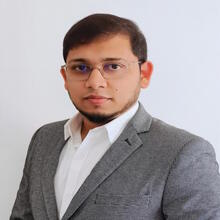

Nilankan KARMAKAR is currently working as a Structural Engineer in the electric powertrain department of Jaguar Land Rover, India. He has around 9+ years of professional experience in the field of Multi-physics related CAE simulation method development after completing his Master’s degree from IIT Kharagpur. He has published more than 5 technical papers and 4 Intellectual Properties in the Automotive domain.
Virtual Evaluation of PM Rotor Failure Modes and Magnet Adhesive Debonding with Cohesive Interface Approach
The modern luxurious electric vehicle (EV) demands high torque and high-speed requirements with increased range. Fulfilling these requirements gives rise to the need for increased efficiency and power density of the motors in the Electric Drive Unit (EDU). An internal Permanent Magnet (IPM) motor is one of the best-suited options in such scenarios because of its primary advantages of higher efficiency and precise control over torque and speed. In the IPM motor, permanent magnets are mounted within the rotor body to produce a resultant rotating magnetic field with the 3-phase AC supply in the stator. IPM configuration provides structural integrity and high dynamic performance as the magnets are inserted within the rotor body. Adhesive glue is used to install the magnets within the laminated stack of the rotor. The high rotational speed of the rotor introduces centrifugal loading on the magnets which can result in multiple failure modes such as the debonding of the magnet, and high radial deflection of the rotor which in turn reduces the rotor-stator air gap.
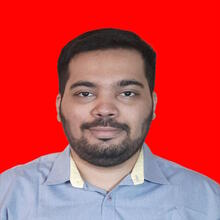

Have 7 years of experience in the CAE strength and durability domain of automotive powertrain components for passenger and farm vehicles using Abaqus.
Robust bolted joint design for vehicle application using Abaqus
Bolted joints are widely used in automotive applications due to their flexibility in assembly and disassembly and their relatively low cost. Due to the increasing performance and the simultaneous lightweight design of bolted joints, the well-known failure of bolt loosening becomes more and more important. Repeatedly occurring relative displacements at the contact surfaces of bolted joints due to transient loads can lead to a gradual rotation of the bolt or the nut. This causes a preload loss and consequently, a loss of function of the bolted joint can lead to safety issues for vehicles during operation and underbody noise. Hence it is very important for the robust design of bolted joints in vehicle applications. In this paper, Using the ABAQUS tool to detect and understand the loosening process at bolted joints and the influences of the preload loss, manufacturing variations like gaps, and friction are discussed in detail for vehicle suspension & HV battery joints. The physical test outcomes and predictions from this study were found to have a pass-pass & fail-fail correlation.


With 7 years of experience in CAE, have gained expertise in Implicit nonlinear analysis, optimization, HPC, and automation using Abaqus & Tosca for automotive and farm sector projects.
Robust bolted joint design for vehicle application using Abaqus
Bolted joints are widely used in automotive applications due to their flexibility in assembly and disassembly and their relatively low cost. Due to the increasing performance and the simultaneous lightweight design of bolted joints, the well-known failure of bolt loosening becomes more and more important. Repeatedly occurring relative displacements at the contact surfaces of bolted joints due to transient loads can lead to a gradual rotation of the bolt or the nut. This causes a preload loss and consequently, a loss of function of the bolted joint can lead to safety issues for vehicles during operation and underbody noise. Hence it is very important for the robust design of bolted joints in vehicle applications. In this paper, using the ABAQUS tool to detect and understand of the loosening process at bolted joints and the influences of the preload loss, manufacturing variations like gaps, and friction are discussed in detail for vehicle suspension & HV battery joints. The physical test outcomes and predictions from this study were found to have a pass-pass & fail-fail correlation.


More information coming soon.
Robust bolted joint design for vehicle application using Abaqus
Bolted joints are widely used in automotive applications due to their flexibility in assembly and disassembly and their relatively low cost. Due to the increasing performance and the simultaneous lightweight design of bolted joints, the well-known failure of bolt loosening becomes more and more important. Repeatedly occurring relative displacements at the contact surfaces of bolted joints due to transient loads can lead to a gradual rotation of the bolt or the nut. This causes a preload loss and consequently, a loss of function of the bolted joint can lead to safety issues for vehicles during operation and underbody noise. Hence it is very important for the robust design of bolted joints in vehicle applications. In this paper, Using the ABAQUS tool to detect and understand the loosening process at bolted joints and the influences of the preload loss, manufacturing variations like gaps, and friction are discussed in detail for vehicle suspension & HV battery joints. The physical test outcomes and predictions from this study were found to have a pass-pass & fail-fail correlation.


More information coming soon.
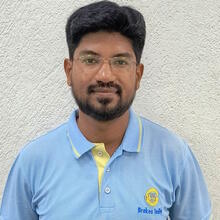

Dinesh Kumar J received his ME in Computer-Aided Design from College of Engineering, Guindy, Chennai, in 2018, and his BE in Mechanical Engineering from Karpaga Vinayaga College of Engg. & Tech. in 2012. He currently works as an assistant manager at Engineering, Research, and Development in Brakes India Pvt. Ltd, Chennai for developing CAE simulation methodology of new products in braking systems. With 9+ years of industrial experience, his expertise is in CAE validation for the automotive and heavy machinery domain.
FE METHODOLOGY TO SIMULATE CAM ROLLER’S RIDE OVER & FALL BACK PHENOMENON IN S-CAM BRAKES
S-cam brake is a drum type foundation brake used in heavy vehicles which uses compressed air as an energy medium. It consists of a S-cam, cam rollers, leading and trailing shoes, brake linings, spider plate, bracket, dust shields and return springs. Brake linings or friction pads are mounted on leading and trailing brakes shoes, which are pivoted at one end and held against the S-cam at other end by return springs. When brakes are applied, the brake chamber converts the pneumatic pressure into linear force. This brake load is then applied to the S-cam cam shaft as a torque by a slack adjuster which acts like a link. When the S-cam with an “S” profiled cam rotates, the Cam shaft torque is again converted into normal forces acting on the leading and trailing shoes through the cam rollers. These rollers are placed at the web slots provided in the brake shoes at either side of the S-cam. The load on the leading and trailing shoe makes the brake lining contact with brake drum generating brake torque thereby the vehicle slows down and stops, due to friction resistance at the drum interface It is a safety critical device, hence, thorough validation of its performances by lab test rigs and field test is essential. With proto design, an unusual noise is observed rarely during dynamic braking which is around 25% of lining worn out condition.


S.RAJKUMAR has completed B.E Mechanical Engineering in 2006 from Thanthai Periyar Govt Institute of Technology Vellore. Currently working as Senior Manager in Application Engineering Group and handling 'S' Cam brake design in Brakes India Pvt. Ltd. Got 17 yrs of experience and responsible for the Design & Development of 'S' cam brake products for Vehicle ranging from 7T to 55T.


Guntaas KAUR is an accomplished Radar Vehicle Integration Simulation Engineer at Continental Autonomous Mobility, bringing over six years of specialized experience to her role. At Continental, Guntaas focuses on the development and optimization of RF simulation techniques to enhance the performance and integration of radar systems in automotive applications. Her work is integral to advancing the safety and efficiency of modern vehicles, particularly in the realm of autonomous driving technology. She holds a master’s degree in electrical engineering and is dedicated to continuous learning and professional growth to stay at the forefront of technological advancements in the field of electromagnetics and autonomous driving systems.
Cutting-Edge mm-Wave Simulation Approaches for Radar Vehicle Integration
As technology rapidly advances, we are entering a new era of transportation where autonomous vehicles have the potential to revolutionize the way we commute and travel. The self-driving vehicles, equipped with advanced sensors, artificial intelligence, and machine learning algorithms, have the capability to significantly reduce human errors that are often the cause of accidents on our roads. With direct speed and velocity measurement, high range, independence from visual conditions and general high robustness against environmental influences, radar sensors are the backbone of environment perception. Radar is a key sensor system enabling object detection and tracking.


Mahima P. is currently working as Radar VI simulation Engineer in AM, Continental Automotive, Bangalore. Her work mainly focuses on developing radar vehicle integration simulation techniques which includes analysis of effect of secondary surfaces on radar performance, internal ghost target analysis and is also actively involved in sensor measurements. Her previous works involved airborne antenna and radome design based on FSS. She obtained her MTech. degree in Microwave and Radar Electronics from Cochin University of Science and Technology (CUSAT).
Cutting-Edge mm-Wave Simulation Approaches for Radar Vehicle Integration
As technology rapidly advances, we are entering a new era of transportation where autonomous vehicles have the potential to revolutionize the way we commute and travel. The self-driving vehicles, equipped with advanced sensors, artificial intelligence, and machine learning algorithms, have the capability to significantly reduce human errors that are often the cause of accidents on our roads. With direct speed and velocity measurement, high range, independence from visual conditions and general high robustness against environmental influences, radar sensors are the backbone of environment perception. Radar is a key sensor system enabling object detection and tracking. Performance of an uninstalled Radar has ideal characteristics. However, when Radar is integrated inside the vehicle, vehicle body and other components in the vicinity such as bumper, chassis, cables deteriorate the performance.


Ex-Emeritus Scientist, CSIR-Central Electronics Engineering Research Institute, Pilani (Raj.) 333031,
Simulation of High Power 0.22-THz TWTs using Single- and Multi-Sheet Electron Beams
THz frequencies from 0.1THz to 10THz of the electromagnetic spectrum are being extensively explored for ultra-broadband communication and many other applications related to imaging, sensing, spectroscopy, security, high-resolution radar, etc. The frequency band around 0.22THz (G-band) is being explored for 6G wireless communication because of relatively low atmospheric attenuation. With that objective, high-power 0.22THz travelling-wave tubes (TWTs) are being designed and developed. The RF performance of a THz TWT primarily depends on its slow wave structure (SWS) and the electron beam passing through the SWS. The SWS supports synchronously propagating THz wave with the high energy electron beam which gets amplified by extracting kinetic energy from the electron beam under the beam-wave synchronous condition. The SWS is to be designed for high interaction impedance, wide bandwidth, and low circuit loss. Because the dimensions of the SWS at THz frequencies are in microns, planar SWS is preferred for a high-power THz TWT. Planar SWS at THz frequencies is comparatively easy to fabricate using micro-fabrication technologies with high mechanical accuracy within ±1µm and high surface finish with surface roughness much less than 10nm.


Kapil AGRAWAL, Senior Engineer – Digital Engineering team at Hero MotoCorp Center of Innovation and Technology holds a master's degree in design engineering from NIT Jaipur and has 8 years’ experience in the field of Finite element analysis. In his career, he has worked on Structural and Sealing analysis of powertrains and have provided consultation in the aspect of simulations to various industries such as Automotive, aerospace, healthcare, offshore. Currently Kapil is working on the strength and durability analysis of chassis and body structural components of 2 wheelers.
Numerical Simulation of blow moulding process of the Plastic Fuel Tank using Abaqus/Explicit
Extrusion Blow Moulding is used to create hollow thermoplastic objects ranging from pharmaceutical packaging to the technical goods such as plastic fuel tanks (PFT) and oil tanks. The extrusion blow moulding method has proven a great capacity to build the plastic fuel tanks made of High density polyethylene (HDPE) with complex shapes. The extrusion blow moulding is technically a two-stage procedure. The first stage involves the creation of parison, a cylindrical heated plastic component in the semi-molten state. In the second stage, the parison is pinched between the two halves of the dies and blown by pressured air, forcing it to stretch and shape against the die walls. Furthermore, the deformed parison solidifies in the die as it cools into the product. Different challenges are faced during blow moulding process in which the final products dimensions are not produced as per the intend with localized variation.
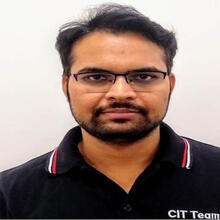

Ashish SHARMA, Senior Engineer – Digital Engineering team at Hero MotoCorp Center of Innovation and Technology holds a Master's Degree in Machine Design from IIT Roorkee and has over 10 years’ experience in the field of chassis design and analysis. During his career, Ashish has worked on strength and durability analysis of chassis and body structural components.
Numerical Simulation of blow moulding process of the Plastic Fuel Tank using Abaqus/Explicit
Extrusion Blow Moulding is used to create hollow thermoplastic objects ranging from pharmaceutical packaging to the technical goods such as plastic fuel tanks (PFT) and oil tanks. The extrusion blow moulding method has proven a great capacity to build the plastic fuel tanks made of High density polyethylene (HDPE) with complex shapes. The extrusion blow moulding is technically a two-stage procedure. The first stage involves the creation of parison, a cylindrical heated plastic component in the semi-molten state. In the second stage, the parison is pinched between the two halves of the dies and blown by pressured air, forcing it to stretch and shape against the die walls. Furthermore, the deformed parison solidifies in the die as it cools into the product. Different challenges are faced during blow moulding process in which the final products dimensions are not produced as per the intend with localized variation. This variation also involves the thickness deviation from the intended design.
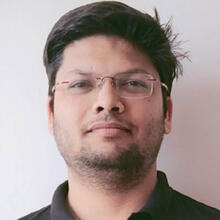

Nikhil Gupta- FEA Engineer with 10+ Years of Experience
Weld Life Prediction in 2 Wheeler Structural Components
Two-wheeler structural components are composed of numerous sub-components joined primarily through welding. Welding is widely used in the manufacturing of two-wheeler structural components due to its cost-effectiveness and efficiency. During the heating and cooling process, welding influences the properties of the material in localized regions.The base material and filler material fuse, resulting in inhomogeneity in the weld. This creates a geometric discontinuity, leading to stress concentration in localised areas. Additionally, welds may contain imperfections such as notches, pores, and voids. Hence assessing the fatigue life of welded joints is a complex and challenging process. Verity helped us to evaluate the fatigue life of welded joints using its novel structural stress method. This presentation discusses the methodology to predict the fatigue life of welded joints using Verity. Verity is based on the novel structural stress method and it is insensitive to the mesh density. However specific meshing methodology is required at localized weld zones. The meshing methodology is based on the weld dimensions like toe length etc. The localized modeling requirements is a huge challenge in the entire process since it takes a significant amount of time and increases the lead time. Challenges in the modeling approach are discussed.The study includes the effects of changes in the modeling approach and parameters on weld fatigue estimation.


FEA Engineer with 14+ years of Experience
Weld Life Prediction in 2 Wheeler Structural Components
Two-wheeler structural components are composed of numerous sub-components joined primarily through welding. Welding is widely used in the manufacturing of two-wheeler structural components due to its cost-effectiveness and efficiency. During the heating and cooling process, welding influences the properties of the material in localized regions. The base material and filler material fuse, resulting in inhomogeneity in the weld. This creates a geometric discontinuity, leading to stress concentration in localized areas. Additionally, welds may contain imperfections such as notches, pores, and voids. Hence assessing the fatigue life of welded joints is a complex and challenging process. Verity helped us to evaluate the fatigue life of welded joints using its novel structural stress method. This presentation discusses the methodology to predict the fatigue life of welded joints using Verity. Verity is based on the novel structural stress method and it is insensitive to the mesh density. However specific meshing methodology is required at localized weld zones. The meshing methodology is based on the weld dimensions like toe length etc. The localized modeling requirements is a huge challenge in the entire process since it takes a significant amount of time and increases the lead time. Challenges in the modeling approach are discussed. The study includes the effects of changes in the modeling approach and parameters on weld fatigue estimation.